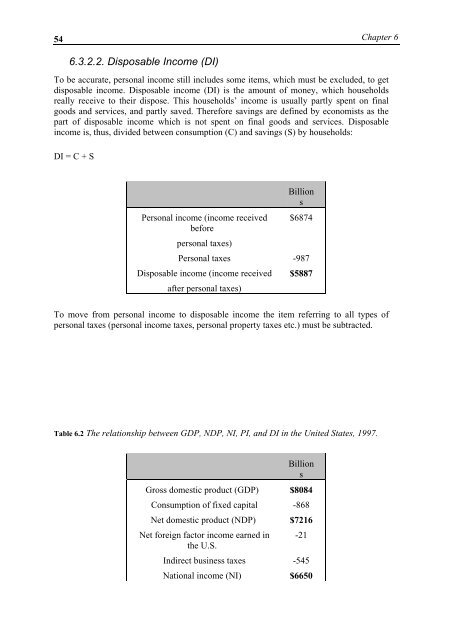MacroeconomicsI_working_version (1)
Create successful ePaper yourself
Turn your PDF publications into a flip-book with our unique Google optimized e-Paper software.
54<br />
Chapter 6<br />
6.3.2.2. Disposable Income (DI)<br />
To be accurate, personal income still includes some items, which must be excluded, to get<br />
disposable income. Disposable income (DI) is the amount of money, which households<br />
really receive to their dispose. This households’ income is usually partly spent on final<br />
goods and services, and partly saved. Therefore savings are defined by economists as the<br />
part of disposable income which is not spent on final goods and services. Disposable<br />
income is, thus, divided between consumption (C) and savings (S) by households:<br />
DI = C + S<br />
Personal income (income received<br />
before<br />
personal taxes)<br />
Billion<br />
s<br />
$6874<br />
Personal taxes -987<br />
Disposable income (income received<br />
after personal taxes)<br />
$5887<br />
To move from personal income to disposable income the item referring to all types of<br />
personal taxes (personal income taxes, personal property taxes etc.) must be subtracted.<br />
Table 6.2 The relationship between GDP, NDP, NI, PI, and DI in the United States, 1997.<br />
Billion<br />
s<br />
Gross domestic product (GDP) $8084<br />
Consumption of fixed capital -868<br />
Net domestic product (NDP) $7216<br />
Net foreign factor income earned in<br />
the U.S.<br />
-21<br />
Indirect business taxes -545<br />
National income (NI) $6650




